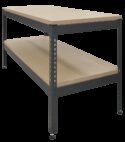Experiment
TE78

FILMWISE AND DROPWISE CONDENSATION AND BOILING
A bench mounting apparatus to allow students to investigate boiling and condensing heat transfer using water as the heat transfer medium.
If you have any questions or you'd like to discuss a product, please call us.
+44 1159 722 611FILMWISE AND DROPWISE CONDENSATION AND BOILING
Gives students an understanding of heat transfer during boiling and condensing. The equipment heats and condenses water, and includes a separate control module with a digital display.
Heating and condensing takes place inside a partially filled glass vessel. A heater coil heats the water.
For boiling heat transfer experiments, students adjust the current in a resistant wire heater element in the water. The temperature of the wire reaches significantly higher than 100°C.
Students watch the boiling process and note the different boiling processes. They note the free convection (before boiling) and the other stages (during boiling).
These include:
- Subcooled boiling: where small bubbles form and rise.
- Nucleate boiling: where large bubbles form and rise.
- Film boiling: unstable and stable, where a vapour blanket forms and heat transfer by radiation becomes important.
For condensing heat transfer experiments, water condenses on two water-cooled vertical cylinder specimens. The cooling water flow rate and its temperature change at each cylinder helps students to find the heat transfer.
To show the effect of surface finish on heat transfer, one specimen has a gold plating and the other has an oxidised finish. They show clearly the difference between filmwise and dropwise condensation.
Learning outcomes
- Boiling heat transfer
- Condensing heat transfer









